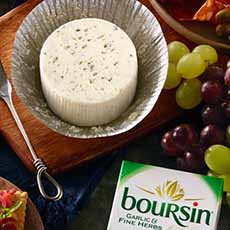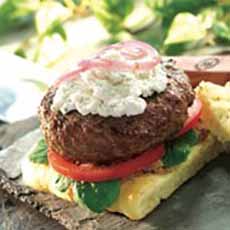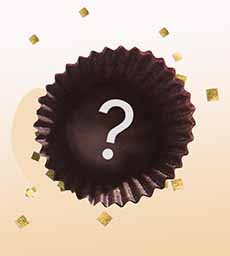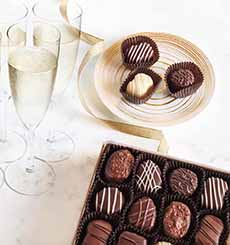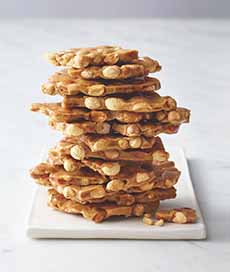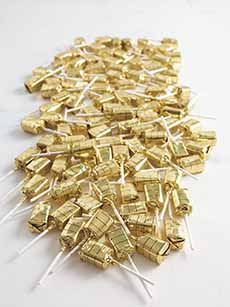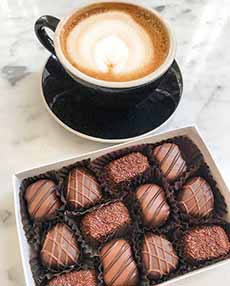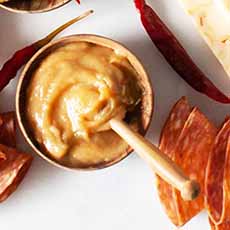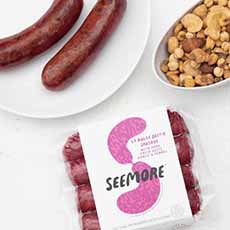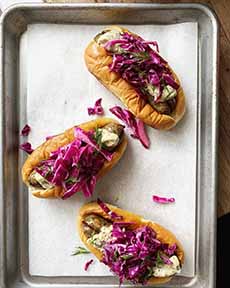|
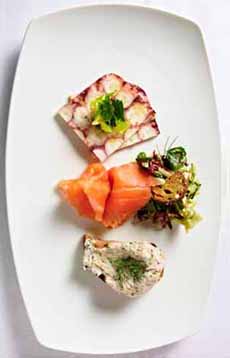
[1] A seacuterie plate from Oceana restaurant, with octopus salami, gravlax with dressed microgreens, and crab spread on toasted baguette (photo © Paul Johnson | Oceana Restaurant).
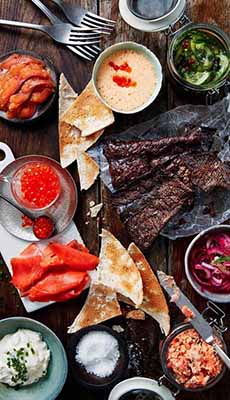
[2] A put-it-together seacuterie board: You can purchase most of what’s here. Here are the recipes fi=or the rest (photo © Wild Alaska Food).
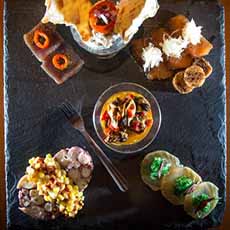
[3] An ample lunch, first course, or dinner at PB Catch raw bar in Palm Beach (photo © PB Catch).
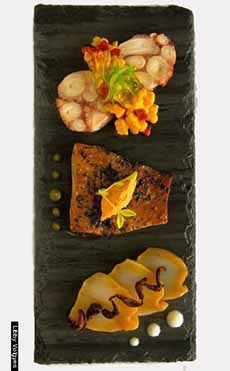
[4] An individual seacuterie board from PB Catch, with octopus salami, salmon pastrami and smoked cod (photo © Libby Volgyes | PB Catch).
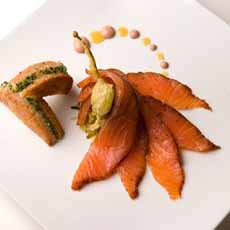
[5] The start of it all: Chef David Burke’s Pastrami Salmon. Here’s the recipe (photo © David Burke Group).
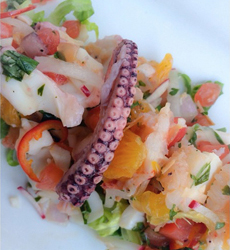
[6] Ceviche is an easy dish to make, and a low-calorie, low-carb addition to a seacuterie plate or board (photo © Lola | Denver).
|
|
Back in 2017 we wrote an article about seacuterie (see-KEW-tuh-ree).
It’s the seafood-based version of charcuterie.
Instead of cured meats (mortadella, prosciutto, salami, etc.) and cheeses, seacuterie leaves the “turf” for the “surf”: seafood choices that are equally tasty, more healthful, and appeal to consumers who want to eat less meat or more sustainable foods in general.
We have long served charcuterie—and now, seacuterie—on a board with cocktails, or individually plated as a first course with dinners.
So…
WHAT IS SEACUTERIE?
Seacuterie is a different approach to two popular starters:
The charcuterie board, replaced with seafood
A seafood platter, or plateau de fruits de mer*
Seacuterie expands the concept of the seafood platter, which is mixed shellfish, both raw and cooked, served cold, usually on a bed of ice; with condiments of mignonette sauce, cocktail sauce and lemon wedges.
Beyond The Seafood Platter
A classic seafood platter is laden with some assortment of clams, crabs, langoustines, lobster, mussels, oysters, prawns, scallops and shrimp.
Occasionally, more exotic mollusks like cockles, periwinkles or snails will appear; and if we’re lucky, one of our favorite shellfish, sea urchin (uni).
Seafood platter items are served raw or lightly cooked (boiled, poached).
Here’s where a seacuterie board or plate diverges:
Seacuterie can include some seafood platter items, but it adds complexity to the variety by adding fish and preparations.
And the good news is that you don’t have to prepare them all yourself (or even any of them, if you so choose).
A seacuterie plate or platter can include elements that you purchase, ready-to-eat:
Caviar or other roe (see the different types)
Clams and oysters (types of oysters)
Eel (ready-to-serve from Asian markets)
Hot smoked salmon
Pickled herring
Salads: crab, herring, shrimp, tuna, whitefish
Salmon or tuna jerky
Sardines, plain or flavored (we’re fans of the Bela Brand)
Smoked salmon or gravlax (here’s a recipe to make gravlax)
Smoked mackerel, trout, tuna, sable, sturgeon, whitefish
Raw shellfish: clams, mussels, oysters, scallops; lightly cooked varieties such as octopus and squid
Sashimi† or sushi
Seafood sausages
Taramasalata (whipped carp roe)
And, it should include recipes that you have prepared:
Anchovy picks with cocktail onions
Ceviche
Crab dip
Grilled shrimp and/or scallop skewers
Grilled squid
Potato slices with caviar/roe
Salmon rillettes (or any other fish you like)
Tuna or salmon tartare or tataki (recipe)
WHAT TO SERVE WITH SEACUTERIE
Baguette or other bread slices
Capers and olives
Condiments: mustard, horseradish sauce
Crackers
Dill for garnish
Pickled vegetables (including pickled onions)
Seaweed salad
WHAT TO DRINK
Seacuterie pairs best with white wine or rosé and sparkling wines.
But you can serve lighter reds like Beaujolais and Pinot Noir. Plus:
Aperitif wine such as Lillet
Beer
Dry Sherry (e.g. Manzanilla and very dry fino sherry like Tio Pepe
Vodka/Aquavit
Whiskey
For cocktails: Martinis are ideal, but a Bloody Mary also hits the spot.
Check out these non-sweet cocktails.
THE HISTORY OF SEACUTERIE
The birth of seacuterie is attributed to the endlessly creative New York Chef David Burke.
In 1998 at the helm of the [late, lamented] Park Avenue Café in Manhattan, he riffed on the Scandinavian cured salmon dish, gravlax [source].
It was a dazzling concept, bursting with flavor, unheard of at the time.
Trading the traditional dill, sugar and salt marinade, he used the more assertive “pastrami spices” (actually black pepper, coriander, parsley, paprika and maple syrup.
Once marinated and preserved, the salmon sides are sliced in the same way as pastrami.
Instead of the thin slices of gravlax, he sliced the cured salmon in the manner of pastrami. Here’s the recipe.
The result, Pastrami Salmon, became a sensation among food writers and the foodies who follow them. Burke subsequently trademarked the name [source].
And the kernel of a future trend—seacuterie—was born.
We are fortunate to have had Pastrami Salmon numerous times at the Park Avenue Café.
Chefs have continued to evolve fancy seacuterie options with preparations such as octopus pastrami, salami or torchon; scallop mortadella; swordfish ham; tuna bresaola and tuna ‘nduja; and other visual- and palate-excitement [source].
What’s next?
Stay tuned!
|



